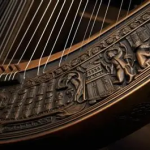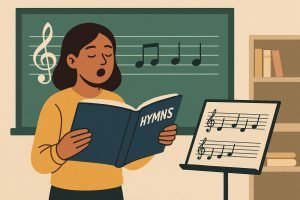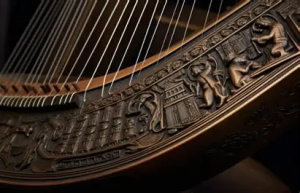Giovanni Pierluigi da Palestrina is a name synonymous with the height of Renaissance polyphony. His influence on sacred music is profound and enduring, shaping the path of Western music for centuries. But beyond his music, Palestrina’s life and times were just as fascinating. Here are 20 interesting facts that reveal more about the man behind the music.
Giovanni Pierluigi da Palestrina | Biography & Facts | Britannica

1. His Name Reflects His Hometown
Palestrina was born around 1525 in the town of Palestrina, near Rome. His full name—Giovanni Pierluigi da Palestrina—literally means “Giovanni from Palestrina.”
2. He Lived During the High Renaissance
Palestrina’s life spanned a critical period in music history. He lived during the peak of the Renaissance, a time of flourishing art, science, and philosophy.
3. He Worked Under the Papacy
Palestrina served as choirmaster at several Roman churches, including St. Peter’s Basilica. He worked directly for multiple popes and was deeply embedded in the religious life of the Vatican.
4. He Was Deeply Affected by the Council of Trent
The Council of Trent (1545–1563) reshaped Catholic worship, and Palestrina’s music is often credited—somewhat mythically—with “saving” polyphony from being banned due to concerns about intelligibility of the text.
5. The “Pope Marcellus Mass” Is His Most Famous Work
This mass is often associated with the idea that Palestrina convinced the Council of Trent that polyphonic music could be spiritually effective and clear.
6. He Composed Over 100 Masses
Palestrina was incredibly prolific in writing masses—over 100 of them survive today, showcasing a masterclass in Renaissance counterpoint.
7. He Was a Master of Counterpoint
His skillful interweaving of melodic lines became the benchmark for what would be studied and admired for centuries to come.
8. His Music Is Purely Vocal
Palestrina’s music was composed almost entirely for unaccompanied voices, typical of the a cappella style of the time.
9. He Also Wrote Secular Music (Briefly)
Though most known for sacred works, he did write a few madrigals early in his career. Later, he regretted composing secular music and focused solely on sacred compositions.
10. He Was Widowed and Nearly Became a Priest
After the deaths of his wife and two sons in the plague of 1572, he considered entering the priesthood but eventually remarried a wealthy widow.
11. He Was Financially Savvy
Unlike many composers of his time, Palestrina was financially comfortable, especially later in life due to his second marriage and ongoing employment.
12. His Style Became the Model for Future Generations
His compositional approach was so revered that it became the foundation of counterpoint studies for centuries, especially through the writings of Johann Joseph Fux in Gradus ad Parnassum (1725).
13. He Taught and Directed Prominent Choirs
He worked with the Cappella Giulia at the Vatican and other major Roman choirs, shaping generations of singers and musicians.
14. He Was Published Widely in His Lifetime
Unlike many of his contemporaries, Palestrina saw many of his works published and distributed throughout Europe.
15. He Inspired the Baroque Masters
Though he lived before the Baroque era, his influence can be traced in the sacred music of composers like J.S. Bach, who studied his works closely.
16. His Music Was Rediscovered in the 19th Century
Romantic composers and scholars, especially in Germany, revered Palestrina as the ultimate expression of religious purity in music.
17. He Was Known for Syllabic Text Setting
Palestrina ensured the clarity of the sacred text by setting most syllables to individual notes, avoiding overly ornate melodies.
18. His Legacy Includes Over 250 Motets
In addition to masses, he composed hundreds of motets, magnificats, hymns, and litanies, many of which are still performed today.
19. He Was Canonized in the Musical World
While never officially made a saint, he was often referred to in near-saintly terms by music historians and clergy alike.
20. He Died in 1594 in Rome
Palestrina passed away on February 2, 1594. He is buried in St. Peter’s Basilica—a fitting final resting place for the “Prince of Music.”
Conclusion
Giovanni da Palestrina’s music remains a cornerstone of sacred choral repertoire. His mastery of polyphony, clarity of text setting, and devout religious expression continue to inspire musicians and listeners alike. Whether you’re a seasoned choral director or a curious listener, exploring his music is like stepping into the sonic heart of the Renaissance.






More Stories
20 Fascinating Facts About Ludwig van Beethoven
Renaissance Music Reformation: The roles of Luther and Palestrina
20 Fascinating Facts About Igor Stravinsky: A Revolutionary Composer of the 20th Century